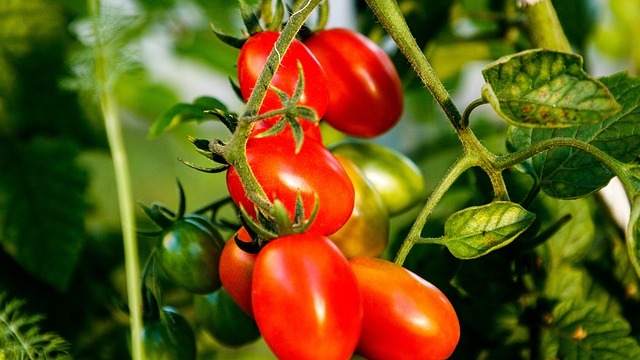| Disclosure: The links on this page are "Affiliate Links" and while these are shown at no costs to our viewers, they generate commissions for our website(s) |
Edible Plants You Can Grow Indoors

Some people just aren’t outdoors people. They prefer sitting in their home to taking a hike on a mountain trail, and that isn’t a character flaw! But there are other people who stay indoors by necessity, whether or not they adore campfires, barbeques, or life by the poolside, because of medical issues that don’t mingle well with too much sunlight.
For those people, being indoors can mean having to distance themselves from activities and tasks that they’ve loved for years, almost like a piece of the person is having to be handed over because of a health issue. They want to be outside to do these outdoor activities. They’re just limited by health concerns.
Fortunately for people in these kinds of scenarios, there are ways to embrace those outdoor draws in an inside-of-your-home approach, and one way that you might not have considered is to start an indoor garden. We’re not just talking about flowers around your home either. We’re talking edible plants growing inside of your home to give you a bit of your outdoor passion back!
Believe it or not, there are plenty of plants that can be grown inside to help with this prospect, like these!
Lemons

Some people love lemon. Some people hate it. If you’re one of the flavor’s fans, know that this is one plant that you can grow inside of your home! Just imagine having fresh fruit within reach and the smell of growing citrus spilling over your home from the process. It sounds like a great deal, for sure!
Some things to note about growing lemon are that lemons—unlike money— do grow on trees, so you’ll need to give yourself enough space to allow the tree to grow and prosper. Otherwise, you’re asking for trouble since the plant could be choked out or knocked over. You can buy a lemon tree that already has fruit or start your own for a more delayed product, but be sure that you take the steps to ensure that this tree is healthy—like using the right pot, soil, sun exposure, and water amounts to keep it lively and healthy (Newcomer, 2013). If you tend to these steps properly, you can have a tasty, healthy treat growing inside of your home!
Potatoes

It might sound bizarre that something that grows underground can be grown inside of your house, but this really is the case! So long as you have the right method of holding your potato seeds and soil (and, of course, eventually your potatoes), you can duplicate the underground method easily within your home (“Genius Ways of Growing Potatoes Indoors,” n.d.). Like you would plant your seeds and dig up your potatoes outside, a deep enough space to work indoors can create a similar enough effect to let you have fresh potatoes growing from January through December!
There are tips and strategies that go along with growing potatoes indoors, like the continuous concern of temperature regulations (“Genius Ways of Growing Potatoes Indoors,” n.d.), but if you tend to these care details, you can have fresh potatoes that put what you see in grocery stores to shame.
Beans

This is a fitting addition at this point on the list if you like a southern meal of beans and taters, but even if that’s not the case, growing beans in your home is a fantastic option because they’re so good for you. In fact, their health benefits include assisting your cardiovascular system, helping in regulating your body’s glucose, and actually lowering your odds of getting cancer (Taub-Dix, 2014). That’s not a bad takeaway for something that comes in so many shapes and possibilities—something that will fit as a side dish on a number of plates!
A couple of things to consider if you decide to grow beans for your indoor garden are the amount of light you’ll need to successfully accomplish your goal as well as the type of beans you’ll want to plant since the complexity of how to grow them can vary on type (Bright, 2015). If you prepare for your choice though, your beans could grow wonderfully indoors.
Mint

If you’re looking for an ingredient that can bring charm to a variety of meals, you can choose to add mint to your indoor garden. It’s ideal from a chef’s point of view since mint can be used to create candy and baked goods, as well as to add an intriguing quality to a dinner to remember. Since we’re looking at a gardening method that allows plants to grow in the winter, mint is of particular interest because you can grow it throughout your holiday season to create seasonal treats and flavored hot chocolate that could leave your mouth watering.
From a gardener’s standpoint, this addition makes a good deal of sense because it’s so easy to manage—even in an indoor setting. It can be grown in a pot, and it doesn’t require the same sunlight levels as other plants do, meaning you don’t have to worry as much over where you place it or where it’s growing (Minq Team, n.d.). Just make sure it gets adequate water and good soil (and containment), and you could have mint to last you all through the cold days of the year (Newcomer, 2013)!
Chili Peppers

If you want to add a little spice to your indoor garden, think about adding some chili peppers. There’s variety to be had, like with beans, in choosing what type of chili peppers you want to plant—just be sure you do your research to make sure your preferred type of peppers is something that is growable indoors (“Growing Chili Peppers Indoors,” 2014). As well, you’ll need to do your research on your specific type of chili peppers since rules of upkeep can vary between types—details like temperature and humidity (“Growing Chili Peppers Indoors,” 2014).
This one, basically, is open to treatment variations based on the type of chili peppers you pick, but growing them indoors is a great way to have your spices ready for a fresh pot of chili on a cold January day. And—better still—the bright, vibrant colors of the peppers can do wonders for bringing vivacity to the look of your indoor garden!
Blackberries

A true natural treasure, blackberries can bring sweet goodness to a summer day, or a reminder of warmer weather in colder months. The problem is that they’re not the easiest plant to come by, and you can tell that by the price tag you see on the fresh blackberries at a local grocery store. Even a quick look at online prices will show that a gallon of blackberries can cost you double-digit prices, which definitely keeps it from being the most cost-efficient fruit.
Some people might put on their hiking boots to wander mountain territories in search of these wonderful fruits to escape that price, but the good news is that you can grow blackberries right in your own home! Like with the chili peppers though, you have to be careful about what kind of blackberries you grow since some don’t stand on their own as easily as others, which makes them a less awesome option for your indoor blackberry goodness (Cohen, n.d.). Size also needs to be taken into account since your space indoors will likely be limited (Cohen, n.d.). Once the plant has been selected and proper preparation has been allotted to its planting, you can sit back and watch delectable treats grow right in your home! Note, however, that this particular addition to a garden might prove one of your most temperamental choices, with its spacing, air, and light needs, so only tackle this garden option if you have the dedication to see it through (Cohen, n.d.)!
With a little research and a bit of preparation, you could grow your own indoor garden to keep you stocked for winter—and active in an outdoor kind of way even if you have to stay inside more than you’d like. It’s a win/win, basically, for the gardener who misses the outdoors and the chef who wants a ready kitchen for the cold, winter months!
References
Bright, S. (2015, November 9). 18 Delicious Edibles You Can Grow Indoors All Winter. Natural Living Ideas . Retrieved from http://www.naturallivingideas.com/18-delicious-edibles-you-can-grow-indoors-all-winter/
Cohen, G. (n.d.). How to Grow Blackberries Indoors. Hunker . Retrieved from https://www.hunker.com/13427572/how-to-grow-blackberries-indoors
Genius Ways of Growing Potatoes Indoors. (n.d.). Gardenerdy . Retrieved from https://gardenerdy.com/growing-potatoes-indoors
Growing Chili Peppers Indoors. (2014, February 8). Chili Pepper Madness . Retrieved from https://www.chilipeppermadness.com/growing-chili-peppers/growing-chili-peppers-indoors
Minq Team. (n.d.). 20 Edible Plants That Are Easy To Grow Indoors. Minq . Retrieved from http://www.minq.com/food/4177/20-edible-plants-that-are-easy-to-grow-indoors/#page=1
Newcomer, L. (2013, July 30). The 16 Best Healthy, Edible Plants to Grow Indoors. Greatist . Retrieved from https://greatist.com/health/best-plants-to-grow-indoors
Taub-Dix, B. (2012, August 20). 11 Health Benefits Of Beans. HuffPost . Retrieved from https://www.huffingtonpost.com/2012/08/16/beans-he...






